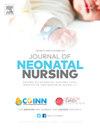德国新生儿重症监护病房早产儿发育定位的实施-一项单中心在线调查
Q2 Nursing
引用次数: 0
摘要
目的早产儿发育定位的目的是保证生理稳定,保护肌肉骨骼系统,支持运动发育。早期运动障碍可能是由于不适当的定位技术引起的。尽管如此,在德国没有关于这些技术如何实施的系统数据。为了解决这一差距,进行了一项单中心在线调查,以评估护理人员的定位方法。目的是利用一个典型的新生儿重症监护室的数据得出关于当前护理实践的初步结论。方法在2022年11月至2023年3月期间对各数据库进行了系统的文献综述。在几轮专家会议上讨论了构建问卷的第一个版本。该调查由来自四个行业的102名专业人士参与,数据是在八周的时间里通过定量在线问卷收集的。结果系统的文献回顾显示,在德国,研究个人使用不同定位辅助设备的积极影响的科学出版物数量很少,没有明确定位概念的证据。46个人参与了调查(回复率:47%)。结果表明,在选择目标、使用的工具和身体位置方面,定位方法是异质的。受访者建议开展更多的跨学科交流,建立标准化的定位方法,对各专业群体进行定位。结论制定规范的早产儿发育定位概念是迫切需要和迫切需要的。对临床实践的启示从调查的答复来看,希望在专业之间有更大的交流。建立促进早产儿发育定位的标准化概念是非常必要的。97%的参与者希望所有专业团体共享标准化定位政策。不同护理人员之间的跨专业合作的重要性在发展定位中起着核心作用,因为所有涉及的学科都会影响护理质量。本文章由计算机程序翻译,如有差异,请以英文原文为准。
Implementation of developmental positioning of preterm infants in a German NICU - A monocentric online survey
Aims
Developmental positioning of preterm infants aims to ensure physiological stability, protect the musculoskeletal system and support motor development. Early motor deficits may arise from inadequate positioning techniques. Despite this, no systematic data exists in Germany on how these techniques are implemented. To address this gap, a monocentric online survey was conducted to evaluate caregivers’ approaches to positioning. The aim was to use data from an exemplary NICU to draw preliminary conclusions about current care practices.
Methods
To design the survey, a systematic literature review was conducted across various databases from 11/2022 and 03/2023. The first version of the constructed questionnaire was discussed in several expert rounds. The survey was distributed to 102 professionals from four professions, with data collected over an eight-week period using a quantitative online questionnaire.
Results
Systematic literature review showed a low number of scientific publications examining positive effects in individual use of different positioning aids and no evidence for defined positioning concepts in Germany. 46 individuals participated in the survey (response rate: 47 %). The results showed a heterogeneous approach to positioning, with regard to the selection of the target, tools used and body positions. Respondents proposed the implementation of more interdisciplinary exchange and the establishment of a standardized positioning approach to positioning for all professional groups.
Conclusions
Elaboration of standardized concepts for developmental positioning of preterm infants is urgently needed and highly desirable.
Implications for clinical practice
From the survey responses a greater exchange between professions is desired. Establishment of standardized concepts for promoting developmental positioning of premature infants is highly warranted. 97 % of participants wanted all professional groups to share a policy on standardized positioning. The importance of interprofessional collaboration between different caregivers has a central role in developmental positioning as all disciplines involved can impact the quality of care.
求助全文
通过发布文献求助,成功后即可免费获取论文全文。
去求助
来源期刊

Journal of Neonatal Nursing
Nursing-Pediatrics
CiteScore
2.00
自引率
0.00%
发文量
143
期刊介绍:
Aims & Scope: This is the practical, bimonthly, research-based journal for all professionals concerned with the care of neonates and their families, both in hospital and the community. It aims to support the development of the essential practice, management, education and health promotion skills required by these professionals. The JNN will provide a forum for the exchange of ideas and information between the range of professionals working in this field; promote cooperation between these professionals; facilitate partnership care with families; provide information and informed opinion; promote innovation and change in the care of neonates and their families; and provide an education resource for this important rapidly developing field.
 求助内容:
求助内容: 应助结果提醒方式:
应助结果提醒方式:


